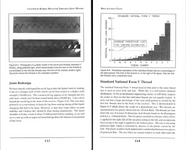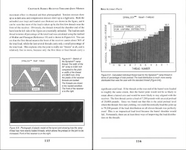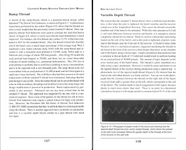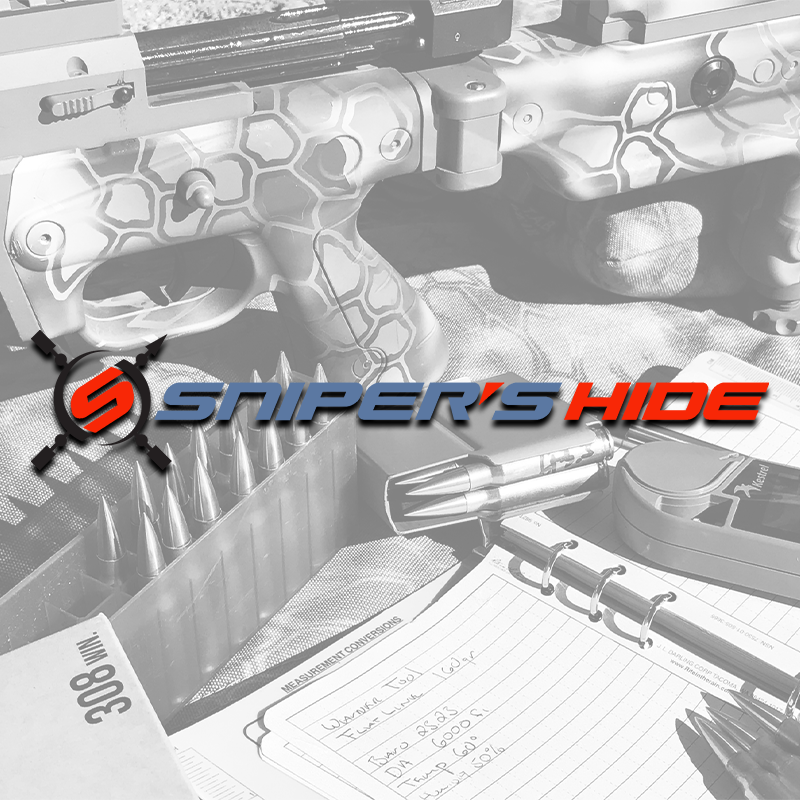Stinky Coyote
WKR
Whoa, take a day or two off and like Christmas! Let’s goooo
Aaron, you’re up
Aaron, you’re up
Follow along with the video below to see how to install our site as a web app on your home screen.
Note: This feature may not be available in some browsers.
Im pretty sure they will chamber whatever you want.@Aaron Davidson, maybe I misheard this but are you offering the new Endex in 6 creedmoor? I don’t see that option on your website.
Its not a published option online, but you can order via phone.@Aaron Davidson, maybe I misheard this but are you offering the new Endex in 6 creedmoor? I don’t see that option on your website.
They don't stay locked up. The axial preload you can max without yielding is less than the force generated by the cartridge expansion on firing that is opposite the thread preload.
But isn't that what is happening? The force of the round is causing the joint to yield (move). Isn't that what Vaughn shows and what Aaron is saying?If you cant pre-load to a force higher than the force of a round going off without yielding, why doesn't the force of the round going off cause the joint to yield?
And that is exactly how threads in a std threaded joint is. Only the first few threads carry most of the load.Only thing i can think of is that the pre-load is primarily on the first few threads



But isn't that what is happening? The force of the round is causing the joint to yield (move). Isn't that what Vaughn shows and what Aaron is saying?
And that is exactly how threads in a std threaded joint is. Only the first few threads carry most of the load.
Std threaded joint, ramp threaded joint (Spiralock) and a variable depth (tapered) threaded joint.
View attachment 951296
View attachment 951297
View attachment 951298
I think we’re a long ways from catastrophic thread failure unless you do something really dumb to cause it.I was looking at yielding as the thread failing.
What is meant by preloading to the point of yielding then? Like it's tightened so much the headspace has "yielded" to be too short? These maybe dumb questions, trying to wrap my head around it.I think we’re a long ways from catastrophic thread failure unless you do something really dumb to cause it.
Because the forces you are speaking of are going in opposite directions.Maybe someone can help me understand this.. If you cant pre-load to a force higher than the force of a round going off without yielding, why doesn't the force of the round going off cause the joint to yield? Only thing i can think of is that the pre-load is primarily on the first few threads but in the opposite direction the force can be split amongst all the threads?
Are you referencing Aaron’s statement?What is meant by preloading to the point of yielding then? Like it's tightened so much the headspace has "yielded" to be too short? These maybe dumb questions, trying to wrap my head around it.
Yes, that's what i'm referencing. If the pre-load forces needed to avoid yielding during firing would cause thread failure, why is it no where close to thread failure during firing? Or if i'm misinterpreting, what is meant by yielding with enough pre-load?Are you referencing Aaron’s statement?
“The axial preload you can max without yielding is less than the force generated by the cartridge expansion on firing “.
If so I would have to think that yes at some point the threads will start to pull, fail from overloading when initially assembling the joint. A threaded joint can only be loaded to a certain point before it will fail or start to fail. We’ve all stripped threaded bolts and screws by over tightening or at least I have
You can’t go beyond that point which I think is his point. If you need more pre load to stabilize the joint you’ll have to re-design the joint. He’s also pointing out that the commonly sized and or designed joints used in rifle actions are inadequate for larger magnum cartridges at least for an accuracy standpoint.If you would have to go past thread failure to have enough pre-load,
I was looking at yielding as the thread failing.

Small addition, I asked TS Customs and they use 100 ft/lbs for their torque.Appreciate all of you guys 'learnin me.
There is a similar discussion going on right now over at snipershide in a thread started by a guy saying 100 fl/lb tq on prefits is stupid and they shouldn't need more than 35. Some good and interesting contributions by industry folks.
- Mike R of TacOps weighed in saying he torques to 300+ and he referenced Vaughn's book.
- Ern who does prefits for Altus i believe said he recommends 100 ft/lb and said he doesn't much faith in Ted of ARC's input because he cant hold a headspace tolerance
- Owner of PVA stood up to defend Ted and indicated he cuts all of his CDG prefits to a spec that is 0.003" off from what ARC has published on their site for CDG headspace spec
- Owner of PVA recommends 70 for standard bolt face and 100 for magnums and provided some calculations to justify it (responding to my questions that mimicked some in this thread). However, he indicated the pre-load with the above torque values exceeded the force of the rounds being fired.

Barrel Torque Ludicrocity
lol. Really though. 100ftlbs for prefit barrel torque? ****, I know this isn’t necessary. AR15 armorer schools is min 35ftlbs unless old school barrel nut needs advanced to next cut out for gas tube clearance. Then it’s 35-65ftlbs range. I run 55ftlbs on my bolt gun Savage style barrel nut...www.snipershide.com
